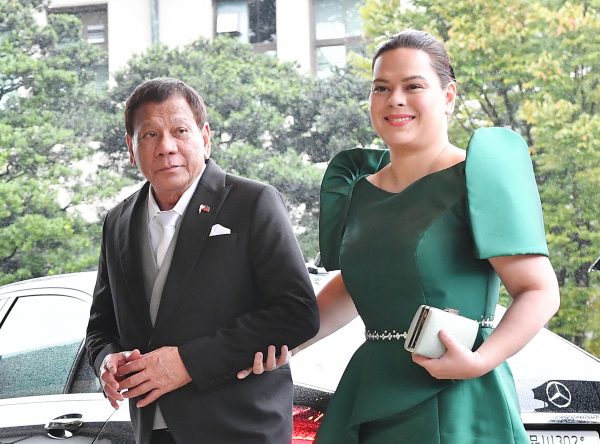The achievements of 30-plus years of democratisation have been imperilled by just five years of Dutertismo — the populist brand of strongman rule Duterte has pursued since his election as president in 2016. With Duterte’s term expiring in 2022, it may be tempting to look forward to the Duterte era coming to a close after the presidential elections due next May, and a course correction for Philippine democracy.
That might be premature. With the election just over a year away, Dutertismo ‘appears to be ready for a second term’ under a Duterte ally, says Cleve Arguelles in one of two feature articles this week.
To be sure, ‘Philippine presidents have a poor track record of getting chosen successors elected’ amid the country’s fluid politics, writes Mark Thompson in a second feature article this week. That won’t stop Duterte trying. He is likely to pull out all the stops to aid the victory of a political ally in 2022, who would allow him to retain influence and protect him from accountability for his abuses of power.
Among those ranking high in pre-election polls are his daughter, Sara; his right-hand man Senator Bong Go; and the ruling PDP–LABAN party chair and boxing star Senator Manny Pacquiao. To some extent Duterte has ‘become a victim of his own success’, writes Thompson. ‘His popularity led to an electoral tsunami in the 2019 midterms, creating an oversized ruling coalition which has exhibited ever larger cracks’ as factions in the pro-Duterte camp position themselves for 2022. Given these tensions, Duterte looks likely to default to the dynastic option, supporting his daughter to succeed him.
Faced with the prospect of Duterte entrenching his influence, the opposition — besieged and despairing after five years of dodgy attacks from Duterte — hopes to achieve an electoral repudiation of Dutertismo. One drawback of the Philippines’ US-style electoral system, which works best in a US-style two-party context, is the lack of a runoff mechanism when no presidential candidate achieves an outright majority on election day. In a crowded field it is easy to win on a plurality — like in 2016, when Duterte beat a suite of establishment politicians to the presidency despite getting only 39 per cent of the vote.
Once burnt, twice shy: there’s a growing consensus that the formation of ‘[a] broad coalition is the opposition’s best chance of effectively challenging Duterte’s successor’ in 2022, says Arguelles.
After experiencing a humiliating defeat in the 2019 midterm elections, a coalition of parties and civil society organisations has pledged to unite behind agreed-upon presidential and vice-presidential candidates next year under the banner of 1Sambayan, or ‘1 Nation’. In one quirk of the Philippine system, the president and vice president are elected simultaneously but on separate ballots, rather than as a united ticket. Potential opposition candidates include Vice President Leni Robredo, a liberal who is estranged from Duterte, and a selection of senators and former officials.
There’s no shortage of experience among the selection of potential challengers. What they might lack, though, is electability. It’s about more than charisma: Duterte has the advantages of incumbency and will exploit them to tilt the playing field in his allies’ advantage. He has been ruthless in ensuring the loyalty of local politicians through legal threats and pork-barrelling. These local bosses could be a formidable get-out-the-vote apparatus for a Duterte ally in 2022. Duterte will also be much better placed to squeeze business elites for donations and to intimidate influential media outlets.
Even if the opposition can remain united, it faces an uphill battle to get its candidate into Malacañang Palace, no matter who he or she is. The most probable scenario is that Duterte will be succeeded by an ally, but just how much power the outgoing president will wield over that successor is hard to predict. Will Duterte take a hands-off approach, or try to rule from behind the throne? Will disagreements over who calls the shots become a source of instability?
What is obvious is that foreign governments need a plan for engaging with a post-2022 Philippines in which Duterte has significant influence over policy and public opinion.
Despite tensions over human rights and Duterte’s often whimsical approach to foreign relations, Western militaries and bureaucrats have continued cooperation with Philippine counterparts on areas from defence to development since 2016. Duterte’s blatant abuses of power, his mercurial personality, and his own anti-Western resentments have often made him hard for foreign partners to deal with. But take away those idiosyncratic factors and some of the barriers to closer engagement with the Philippines fall away, even if Duterte is succeeded by one of his own allies.
The erosion of democratic norms will likely continue under a like-minded successor, and foreign governments will be forced to remain vocal about that. The reality is that they will be grateful for any president who can build a more consistent approach in Manila’s dealings with China, help to shore up ASEAN’s regional role, and continue cooperation on shared security challenges like violent jihadism.
The EAF Editorial Board is located in the Crawford School of Public Policy, College of Asia and the Pacific, The Australian National University.

